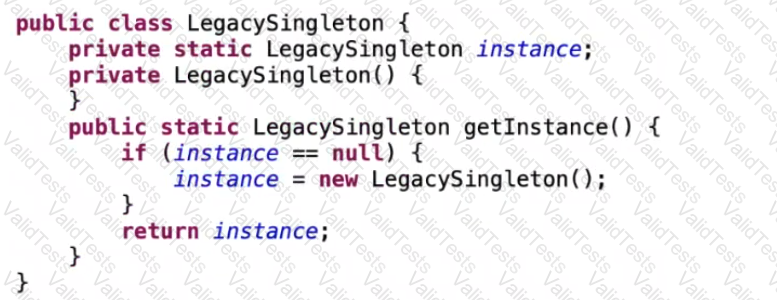Which two statements about pointcut expressions are true? (Choose two.)
Which two statements are correct regarding the differences between @ConfigurationProperties and @Value? (Choose two.)
Spring Boot will find and load property files in which of the following? (Choose the best answer.)
Which statement is true about the @PropertySource annotation? (Choose the best answer.)
Which three types can be used as @Controller method arguments? (Choose three.)
Refer to the exhibit.

AppConfig is a Java configuration class. Which two statements are true? (Choose two.)
Which dependency enables an automatic restart of the application as code is changed during development of a Spring boot configuration on a web application? (Choose the best answer.)
Which two statements are correct regarding Spring Boot 2.x Actuator Metrics? (Choose two.)
Refer to the exhibit.

How can a Spring Bean be created from this LegacySingleton class?
Which two statements are true about @Controller annotated classes? (Choose two.)